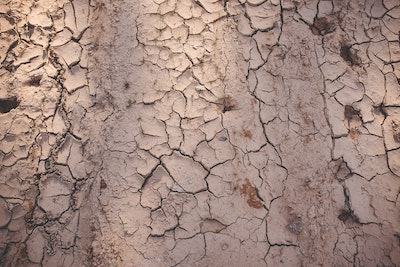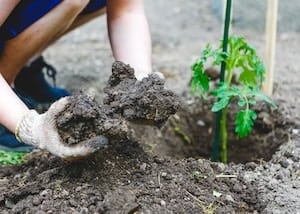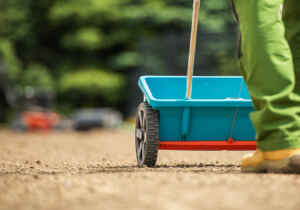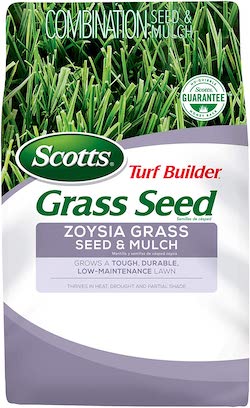Ultimate Guide to the Best Grass for Clay Soil
Everyone loves a luscious lawn. There is no better feeling than walking barefoot in your yard on a warm summer evening. Unfortunately, this type of lawn is not easy to achieve for all homeowners. Depending on the region in which you live, you may face certain challenges due to the soil, rain, or other variables outside of your control. Fortunately, many varieties of grass seed have been created, allowing you to choose a type of grass that will thrive in your unique environment.
What’s the best grass for clay soil? As with any type of grass seed, it is important to choose a type of grass that works best for your environment. The best grass for clay soil in both warm-season and cool-season climates include bermudagrass, buffalo grass, Kentucky bluegrass, perennial ryegrass, red fescue, tall fescue, and zoysia.
Many homeowners do not even realize that different types of grass are suited for their environment! In this post, we will provide you with everything you need to know to choose the best type of grass for your clay soil. We will also share several tips for growing a luscious, healthy lawn that you can continue to enjoy year after year.
Characteristics of Clay Soil
So, what exactly is clay soil? Clay soil is very heavy and dense. Because it is so compact, it can be challenging for some plants to establish successful root systems. While many people assume that clay soil is void of positive attributes, this is not the case. One must simply learn how to navigate this type of soil properly.
Clay soil retains water incredibly well. However, because it does not provide much natural drainage, homeowners tend to overwater their lawns causing root rot and other issues. Clay soil is also quite rich in nutrients such as calcium, magnesium, and potassium.
While clay soil in some regions of the United States is a bright red color, clay soil may also present itself in varying shades of brown.

How to Identify Clay Soil in Your Yard
Some regions of the country, the south, for example, are known for their abundance of clay soil. However, just because you live in the south does not necessarily mean that you automatically have clay soil. In many newer neighborhoods, for example, a thick layer of topsoil is layered on top of the clay soil to promote a much luscious lawn.
Because of this, it is important to verify that you do, in fact, have clay soil in your yard before choosing a type of grass seed. There are many ways to identify clay soil in your yard. When it rains, water will quickly form a puddle instead of immediately soaking into the soil. You can learn more about why your lawn is always wet here.
If you have clay soil, you may also notice that your soil forms large clumps that are hard to break apart once dry. Clay soil also tends to accumulate heavily on garden tools or shoes and will crack once it dries instead of simply falling off the surface.
While it is often rather simple to identify clay soil in your yard, a lawn care professional can provide you with additional information regarding the type and quality of your soil.
Best Varieties of Grass Seed for Clay Soil
To achieve luscious grass in clay soil, you must select a grass seed that is known for its robust root system and tolerance to water. Types of grass that grow deep root systems are favorable to grass varieties with shallow root systems for growth in clay soil. You will also need to identify which region you live in, whether a warm-season climate or a cold-season climate.
Some of the best varieties of grass seed for clay soil include the following:
- Bermuda Grass
- Buffalo Grass
- Kentucky Bluegrass
- Perennial Ryegrass
- Red Fescue
- Tall Fescue
- Zoysia
While you may be able to grow other varieties of grass in clay soil, the types listed above will provide you with the best results provided you follow a proper lawn maintenance routine.
Choosing Warm-Season Grass for Clay Soil
Much of the success of your grass growth is based on choosing a type of grass that will thrive in your climate. If you live in a warm region, you will need to select a warm-season grass that will thrive in the intense heat.
The best types of warm-season grasses for growth in clay soil include:
- Bermuda Grass
- Buffalo Grass
- Zoysia Grass
These three types of grasses are favored for their deep, hearty root systems, ability to survive seasons of drought, and love for hot weather. And although these varieties of grass can survive dry, arid conditions, they can handle the amount of water that clay soil may retain following a summer storm.
Choosing Cool-Season Grass for Clay Soil
If you live in a cool season, you will need to select a cool-season grass that will be able to outlast the cold of winter.
The best types of cool-season grasses for growth in clay soil include:
- Kentucky Bluegrass
- Perennial Ryegrass
- Tall Fescue
While these types of grasses do not prefer long periods of intense heat, they are hearty enough to withstand the cold temperatures cool-season climates may experience. Similar to the warm-season grasses for clay soil, these cool-season grasses are known for their deep root systems that will thrive despite the dense clay soil.
Like most cool-season grasses, these grass varieties will require a bit more watering than their warm-season counterparts. However, due to the clay soil beneath, you must be diligent to not overwater, causing the water to flood the roots of your lawn.
States with Clay Soil
Clay soil can be found in Indiana, Ohio, Michigan, North Carolina, Tennessee, Virginia, Texas, Wisconsin, Oklahoma and several other states.
Benefits of Clay Soil for Grass Growth
Although many homeowners believe that they are doomed to have a sub-par lawn upon learning they have clay soil, this is not the case! There are many benefits that clay soil provides for grass growth.
Clay Soil Retains Water
Clay soil is known for its ability to retain water. While it is important that you do not overwater your lawn, this can actually save you money and time! Because clay soil will retain water, even during short seasons of drought, most homeowners will not need to worry about irrigation for their lawn. Without the need for frequent watering, growing grass in clay soil can actually be quite low maintenance.
Clay Soil is Rich in Nutrients
Clay soil is naturally rich in nutrients such as calcium, potassium, and magnesium. Homeowners with other types of soil often need to add these nutrients back into their soil using a fertilizer. Because these nutrients naturally occur in clay soil, you will need to fertilize your yard less frequently, or possibly not at all!
 Disadvantages of Clay Soil for Grass Growth
Disadvantages of Clay Soil for Grass Growth
As with anything, there are also a few disadvantages to growing grass in clay soil. However, by choosing the right type of grass seed and developing a lawn maintenance routine, you can easily overcome these challenges.
Clay Soil is Quite Dense Which Challenges Root Growth
Clay soil is, by nature, quite dense. Because of this, it can be hard for grass seed to take root. To combat this density, you can aerate your soil before planting grass seed. Additionally, selecting a type of grass that is known for its robust root system will minimize challenges in this area.
Without Proper Drainage, Clay Soil Retains Too Much Water
Clay soil does a great job of retaining water. In fact, it may do too great of a job sometimes. If your yard does not have proper drainage, you may need to take additional steps to allow for proper water flow. This may include aerating your lawn each year to provide a way for the water to escape. You can also consider changing your yard’s landscaping to accommodate for better drainage.
Tips for Growing Lush Grass in Clay Soil
While you can always throw some grass seed on your yard and hope for the best, this is not the best strategy for achieving the lush lawn you wish for. In order to achieve a lawn on which you can walk barefoot, you may need to put in a bit of work on the front end. Trust us, this extra effort will be well worth it, especially for homeowners who are growing grass in clay soil.
Adjust Your Soils pH Level Before Planting Grass Seed
Clay soil is typically quite alkaline. You will have the best chance of achieving the grass of your dreams if you adjust your soil’s pH level before you plant new grass seed. You can find an inexpensive pH meter at your local home repair store or greenhouse. Using this meter, test your soil to identify the baseline pH level.
In order to achieve the healthiest lawn possible, your soil’s pH level should be somewhere between 5-7, with 6.5 being the goal. Your clay soil will likely have a higher pH level, somewhere in the 7-10 range. In order to lower the pH level of your clay soil, simply spread granulated sulfur on top of the soil before laying your grass seed.
Add Organic Matter to Your Clay Soil
In many cases, clay soil is so dense that even the most robust grassroots have a hard time getting established. By adding organic matter such as compost, topsoil, or manure, you can distribute the dense clay. While you may see results by simply spreading this organic material on top of your clay soil, it is best to incorporate it with a garden rake before planting your new grass seed.
Consult a Lawn Care Professional for Further Advice
Finally, don’t become discouraged if growing grass on clay soil isn’t as easy as you once thought. Although these tips will help you achieve success, you may need to try a few times before you can grow the luscious lawn of which you dream.
If you are struggling to successfully grow grass on your clay soil, consider consulting a lawn care professional for further advice. They will be able to look at the layout of your landscaping, assess your yard’s draining, and even test your soil to identify any deficiencies.
Don’t Let Clay Soil Prevent You From Achieving a Lush Lawn
While growing grass in clay soil is not for the faint of heart, it is possible! By choosing the right type of grass for the clay soil in your climate, you can start your lawn off on the right foot. Practicing a proper lawn maintenance routine including adequate watering, regular lawn mowing, and periodic fertilization will help you achieve the yard of your dreams!





